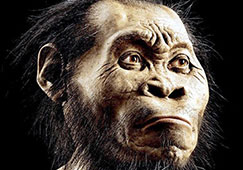History and heritage
New human related species found at Maropeng
#Rising Star Here we go...@MaropengSA@Abramjee@Wits_News@WitsUniversitypic.twitter.com/IUfid9CKNu
— Lead SA (@lead_sa)September 10, 2015#Maropeng A photo showing what it took to get into the area where fossils were discovered.pic.twitter.com/rMF3EM88dK
— Alex Eliseev (@alexeliseev)September 10, 2015Professor Berger says he introducing a new species of human ancestors called Homo Naledi (meaning star)#Maropeng
— SA Gov News (@SAgovnews)September 10, 2015 The new species closely related to human beings, homo naledi, was unveiled at Maropeng on 10 September 2015. (Image: National Geographic)
The new species closely related to human beings, homo naledi, was unveiled at Maropeng on 10 September 2015. (Image: National Geographic)
Related links
Related articles
- South African team uncovers answers to the origin of turtles
- Natural gas power plant to boost South Africa's energy security
- Karoo rocks explain mass extinction
- Cape floral heritage site expands
- New dinosaur discovery in South Africa
- Telling South Africa's history at Freedom Park
- Wits University researchers reveal how the tortoise got its shell




